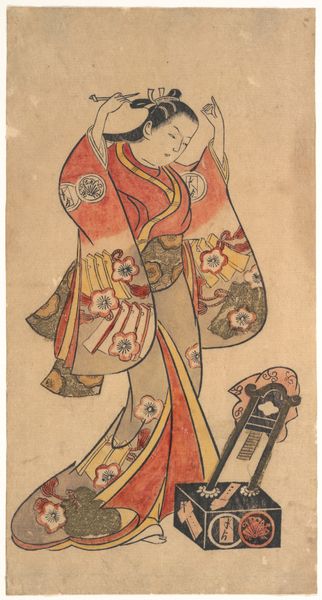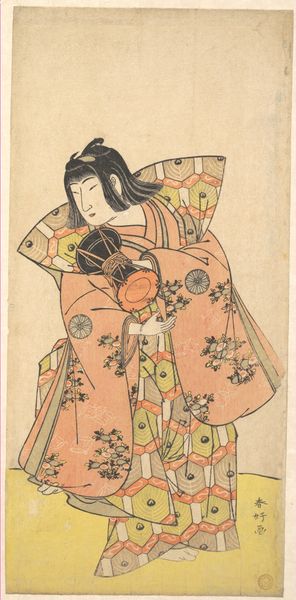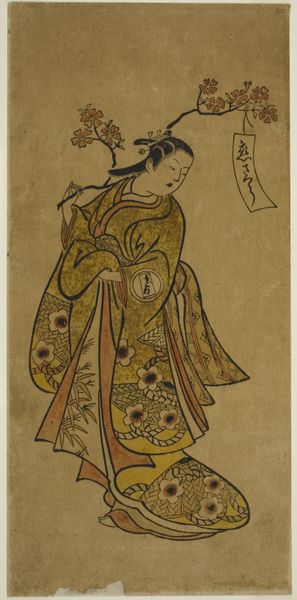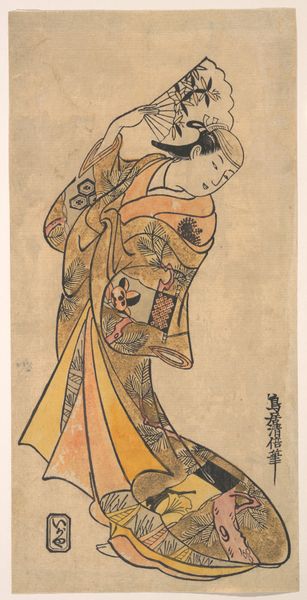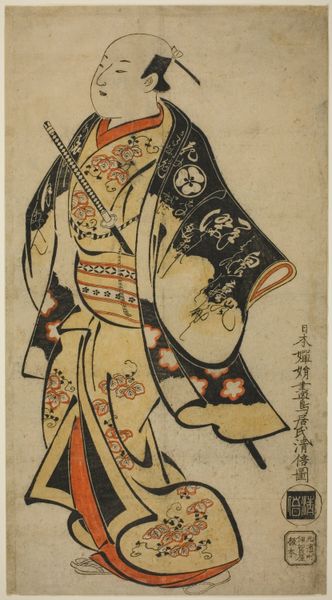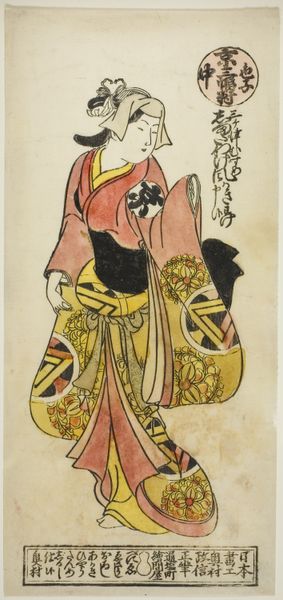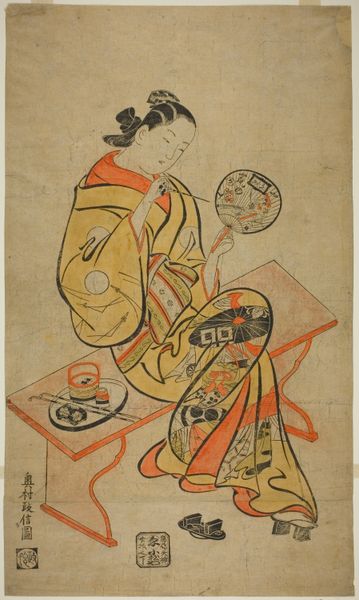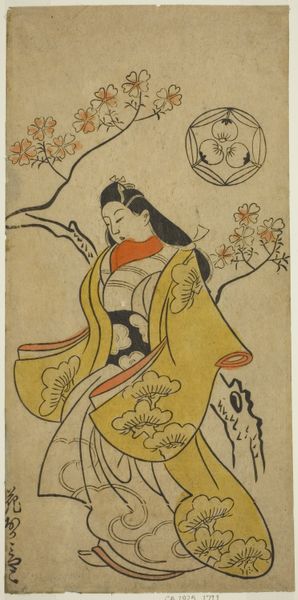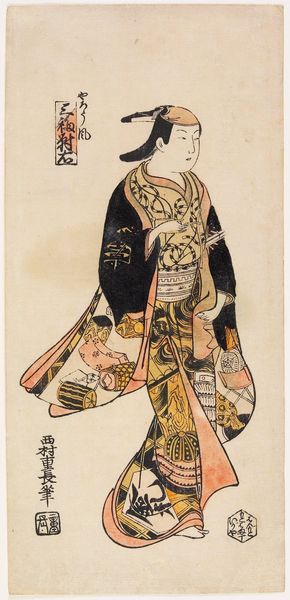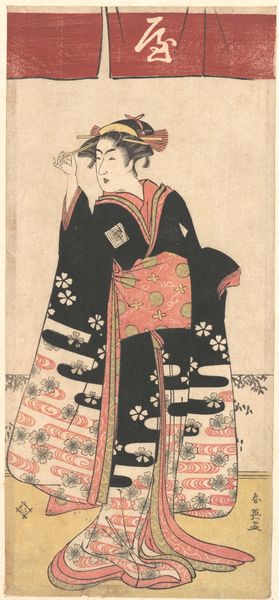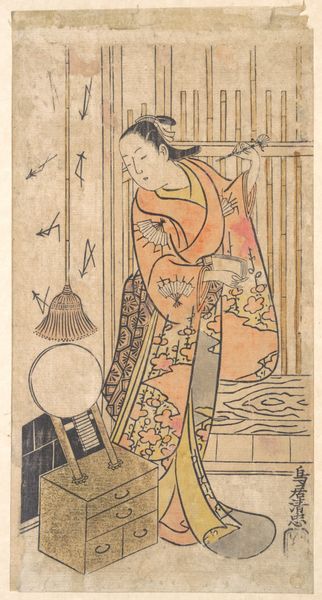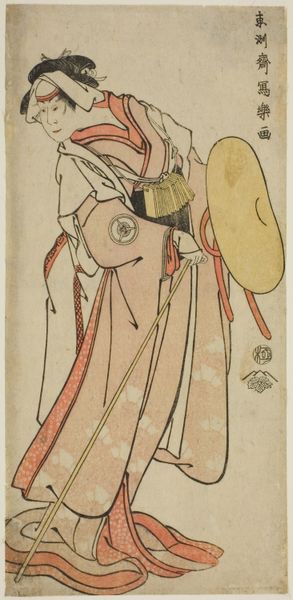
Sanjō Kantarō as a Woman Arranging Her Hair Before a Lacquer Mirror 1663 - 1763
0:00
0:00
print, woodblock-print
#
portrait
# print
#
asian-art
#
ukiyo-e
#
figuration
#
woodblock-print
Dimensions: 12 3/4 x 5 3/4 in. (32.4 x 14.6 cm)
Copyright: Public Domain
Curator: This ukiyo-e woodblock print, attributed to Torii Kiyomasu II and created sometime between 1663 and 1763, presents the actor Sanjō Kantarō in the guise of a woman pausing to arrange her hair before a lacquered mirror. Editor: I am struck by the tender stillness of this moment. There’s a quiet intimacy portrayed in the subject’s downcast gaze and delicate gesture. She almost seems unaware of being observed. Curator: Indeed. The image evokes not just the figure of Sanjō Kantarō, but also refers to the deeper codes of idealized femininity embedded within ukiyo-e prints. Editor: Definitely. How much does the performance of gender onstage in Kabuki affect the gender that's being portrayed off-stage by Sanjō? Was his presentation of an exaggerated woman feeding into or mocking cultural values, and what can this tell us about ideas of the feminine in 17th or 18th century Japan? Curator: Well, Kabuki allowed actors to transcend social barriers and achieve celebrity. Actors were also fashion trendsetters in Edo period Japan. Their performances deeply impacted consumer culture by influencing makeup and clothing choices. As you can see here, Sanjō Kantarō is also fashionable: He wears a beautifully decorated robe. Editor: And I think, on top of that, there's some intentional camp. Even if viewers didn't consciously clock who this actor was or why they were known, I'm wondering whether a bit of performative excess could be sensed and appreciated in Kantarō's time. Curator: Possibly. His image would carry multiple meanings at once, signifying the man, his female roles, and their combined persona as a cultural icon. And the presence of the mirror only seems to multiply all the performance. The mirror shows both physical preparation, perhaps before a stage entrance, and the artifice inherent in how gender itself can be 'performed' by a human, not only onstage, but every day. Editor: It prompts me to think about the ways in which gender continues to be both consciously and unconsciously performed. Gender, in that sense, can be seen as a kind of theater where societal expectations frame our actions and choices. Thanks, that gives me a lot to think about. Curator: My pleasure. To witness, through this print, how meanings become embedded within images is both fascinating and, hopefully, educational.
Comments
No comments
Be the first to comment and join the conversation on the ultimate creative platform.
